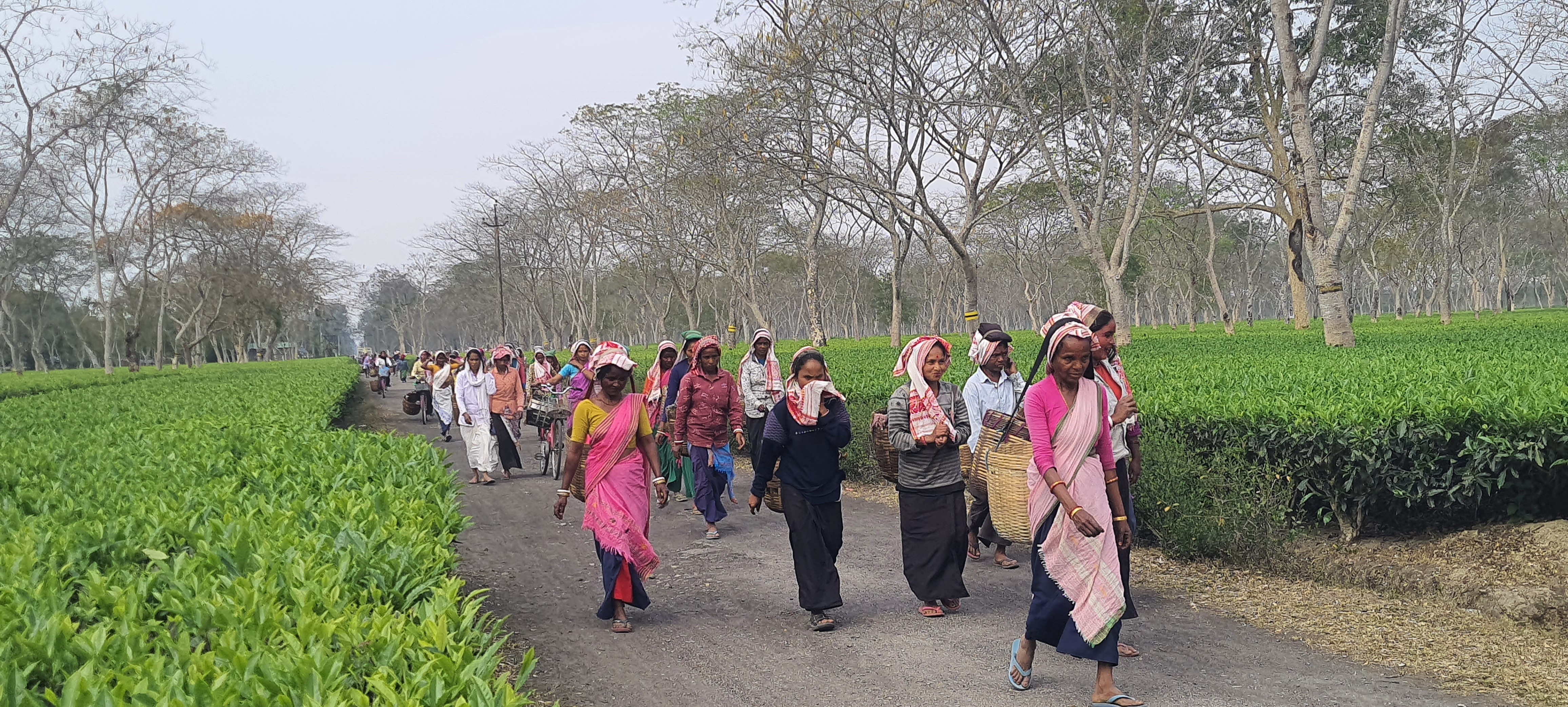Biswanath, Assam – If India wakes up to a cup of tea, chances are it comes from the lush green slopes of Assam, home to some of the world’s finest tea estates. But beyond the aroma of freshly brewed chai lies a lesser-known marvel—Monabarie Tea Estate, Asia’s largest tea garden—not just a hub of production but a thriving ecosystem where over 10,000 people live, work, and celebrate life together.
A Legacy Rooted in Tea
Founded in 1869, Monabarie Tea Estate stretches across a sprawling 1,367 hectares in Biswanath district, lining both sides of National Highway 15. Owned by McLeod Russel India Ltd., this tea estate is a powerhouse in India’s tea industry, producing a staggering 26 lakh kg of dry tea annually, sourced from an impressive 1.17 crore kg of tea leaves.
But Monabarie is more than just a production giant—it’s a self-sustaining community, deeply intertwined with Assam’s cultural and economic fabric.
A Workforce That Fuels a Nation

With 3,590 workers, including 2,400 permanent employees and hundreds of seasonal laborers, the tea estate functions like a well-oiled machine. The workforce is not just about numbers; it’s a close-knit community where generations of families have cultivated tea, making Monabarie their home.
The estate provides housing, healthcare, education, and food subsidies—a rare ecosystem where work and welfare go hand in hand.
“This garden is our pride. It is not just the home of Adivasi tea tribes, but also of many ethnic groups who live and work together.”
says Robin Tasa, a senior worker and president of Monabarie High School’s managing committee.
A Community Beyond Tea
At Monabarie, work and life blend seamlessly. The estate is home to:
- A full-fledged hospital and three sub-health centres with trained doctors
- Four primary schools to educate workers’ children
- Subsidized food (workers receive 3.25 kg of rice and flour for just 50 paise per week)
- Temples, Namghars, and a playground, reinforcing cultural and social bonds
From Durga Puja to Magh Bihu, the estate comes alive with festivals, proving that Monabarie is not just about tea—it’s about a lifestyle rooted in tradition, harmony, and hard work.
Beyond the Brews: The Future of Monabarie
The Monabarie Tea Estate is not just a plantation; it’s a microcosm of Assam’s tea legacy, where every leaf picked tells a story of resilience, labor, and community spirit.
At a time when tea estates across India are facing challenges due to climate change and fluctuating global demand, Monabarie stands tall—not just as Asia’s largest tea estate, but as a model of sustainable tea cultivation and human development.
So, the next time you sip a cup of Assam tea, remember—somewhere in the heart of this sprawling green expanse, a community thrives, bound together by the love of tea and the spirit of Assam.








